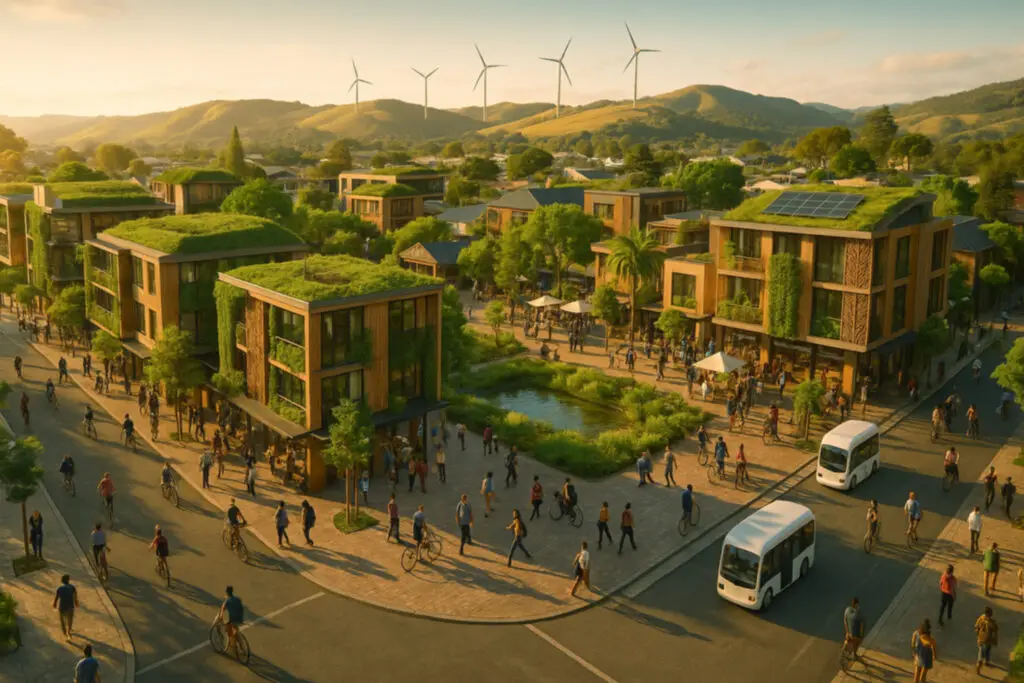Better-Cities Healthier Communities QandA
Better-Cities Healthier Communities QandA inspires many questions: How do super blocks cut pollution? Why does inclusive design improve safety? This Q and A distills peer-reviewed findings into clear answers. Learn how mixed-use zoning supports walking and how cycling infrastructure saves lives. Data dashboards keep officials accountable, while funding tools and 15-minute models guide equitable growth. Use these insights to benchmark your neighborhood or craft new projects. Need wider context? Follow the link back to our full research section.

What does “Better Cities Healthier Communities” mean in today’s planning practice?
Better-Cities Healthier Communities describes an evidence-based vision where urban form nurtures health, equity, and sustainability. Planners create compact, mixed-use neighborhoods that place homes, jobs, parks, and transit within easy reach. Shorter commutes reduce stress and free time for family, recreation, and volunteering. Green infrastructure cleans air and lowers heat while offering places for exercise. Affordable, well-ventilated housing protects residents from cold, damp, and pollution. Socially inclusive spaces such as plazas, libraries, and community centers foster trust and safety. Livability dashboards track progress, using metrics like air quality and transit access to guide policy. The Australian Urban Observatory explains how these indicators quantify city health gains.
How does active transport improve public health in better cities?
Active transport—walking and cycling—sits at the heart of Better Cities Healthier Communities strategies. Protected bike lanes, wide sidewalks, and traffic-calmed zones encourage daily movement while cutting emissions and crashes. The World Health Organization links physical inactivity to millions of deaths each year, yet Dutch research shows cycling culture prevents about 6 400 deaths annually and adds six months to life expectancy. Shifting trips under three kilometers to foot or bicycle also lowers nitrogen dioxide and fine particulates, easing respiratory illness. During the pandemic, Milan, Paris, and London fast-tracked bike networks and pedestrian streets, an action that immediately delivered cleaner air and reduced noise. Evidence confirms that designing streets for people, not just vehicles, is a cost-effective public-health intervention. Read the WHO’s design guidance here.
Why is inclusive design essential for building healthier communities?
Inclusive design ensures that every resident—children, elders, people with disabilities, and all genders—feels welcome and safe in public space. Vienna’s gender-responsive planning offers a proven template: brighter lighting, wider sidewalks for strollers, plentiful benches, and park layouts that invite girls to play. These adjustments, based on detailed social-space analyses, increase park use, walking rates, and perceived safety. The World Health Organization calls for “socially inclusive places and spaces” because social cohesion supports mental health and mutual care. When public areas work for everyone, neighbors meet regularly, trust grows, and vandalism drops. Inclusive design therefore becomes a preventive health measure, reducing isolation and stress-related disease. For practical examples, see Vienna’s case studies on CityChangers.
What is the 15-minute city, and how does it support Better Cities Healthier Communities?
The 15-minute city reimagines urban geography so residents can reach work, shops, schools, parks, and healthcare within a quarter-hour walk or ride. This proximity model cuts car dependency, saves household transport costs, and frees time for rest or social life. Compact, mixed-use zoning also supports local businesses and reduces emissions. Municipal leaders see the concept as a triple win for equity, climate, and health: youth, older adults, and low-income households gain reliable local access to essentials. Dozens of Western cities, from Paris to Melbourne, have integrated the model into master plans, tailoring distances to their context. Research compiled by the National League of Cities shows that greater neighborhood service density correlates with higher walking rates and lower obesity.
How do cities measure progress toward Better Cities Healthier Communities?
Data dashboards and livability indexes provide continuous feedback on urban health. Cities layer transport, housing, and environmental datasets onto interactive maps to spot gaps—such as areas with high asthma hospitalizations and heavy traffic. Key performance indicators might include average commute time, park access within 300 meters, or neighborhood tree canopy percentage. Public reporting keeps agencies accountable and lets residents track improvements. Barcelona, for example, publishes air-quality changes after each Super block opens, showing nitrogen dioxide dropping by one-quarter. The Australian Urban Observatory maps livability scores block by block, helping planners target interventions. By pairing evidence with transparent reporting, municipalities fine-tune policies and build public trust in the Better-Cities Healthier Communities QandA agenda. Explore one dashboard here.
Which governance and funding tools accelerate healthier city transformations?
Cross-sector governance and creative financing turn vision into reality. Many councils adopt a Health-in-All-Policies filter, requiring every zoning or transport decision to consider health outcomes. Minneapolis’s 2020 move to eliminate single-family-only zones shows zoning reform’s power to expand housing choice and well being. Public-private partnerships finance parks and transit lines; participatory budgeting lets residents allocate funds to local improvements, boosting ownership. Global programmers, such as Bloomberg Philanthropies’ Partnership for Healthy Cities, supply grants and technical aid for pilots like Barcelona’s Super block assessments. Transparent dialogue with businesses and residents—exemplified by Oslo’s car-free center—converts potential opposition into support. These approaches collectively provide the leadership, resources, and legitimacy essential for delivering Better-Cities Healthier Communities QandA.